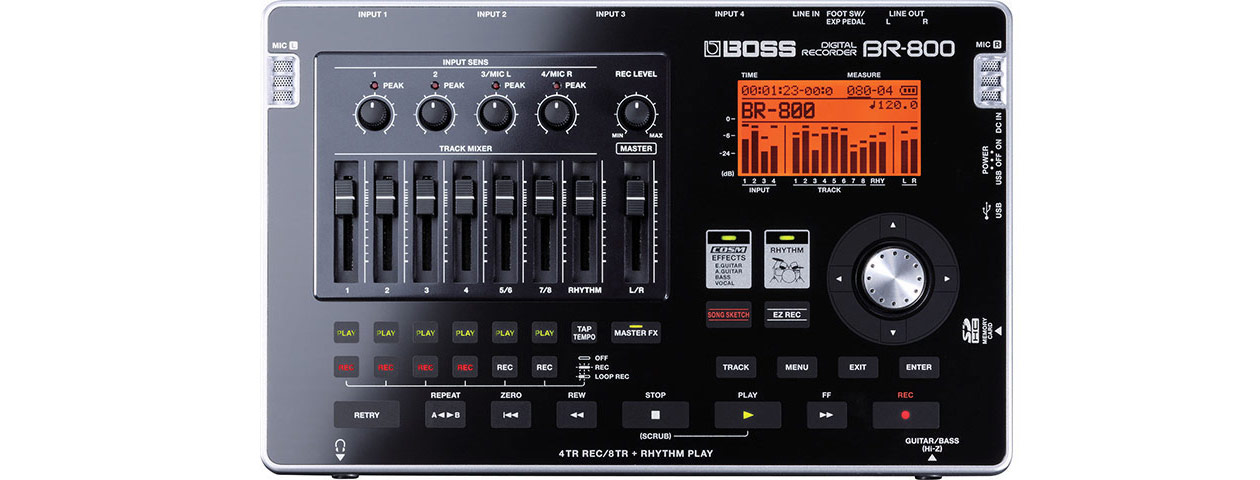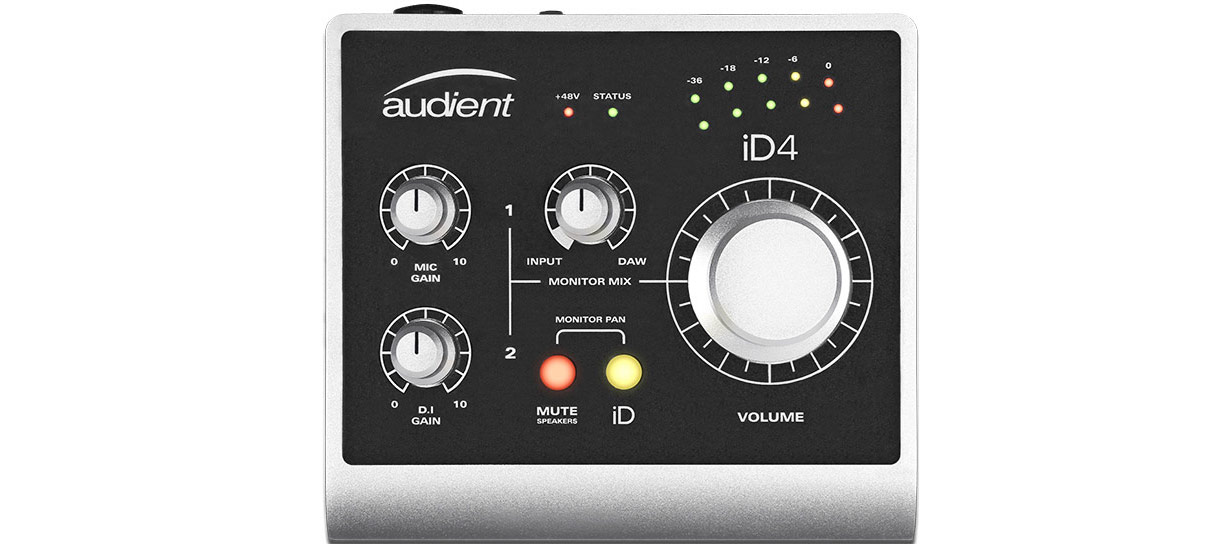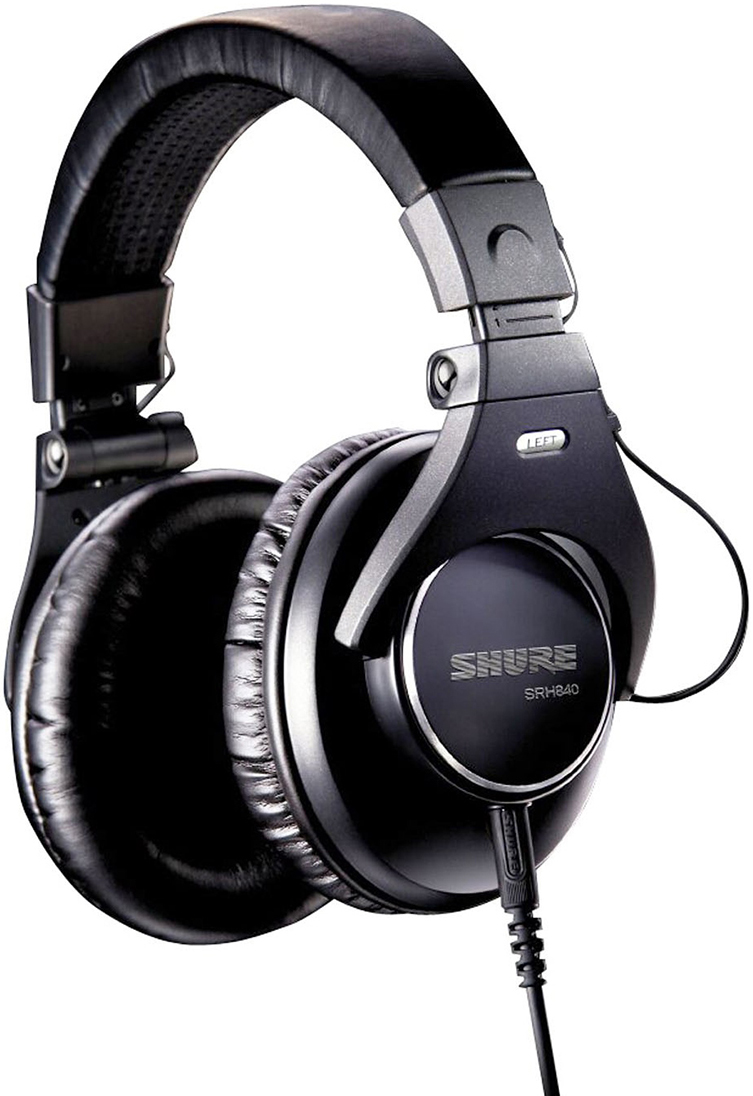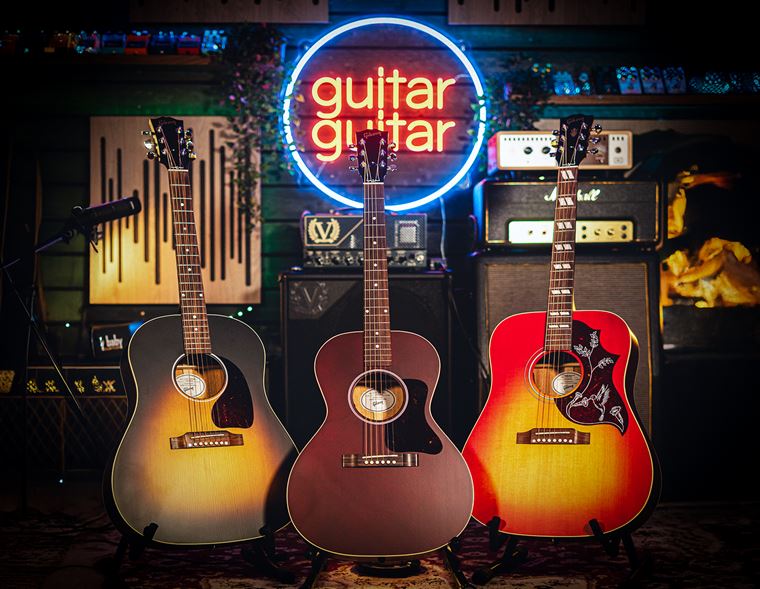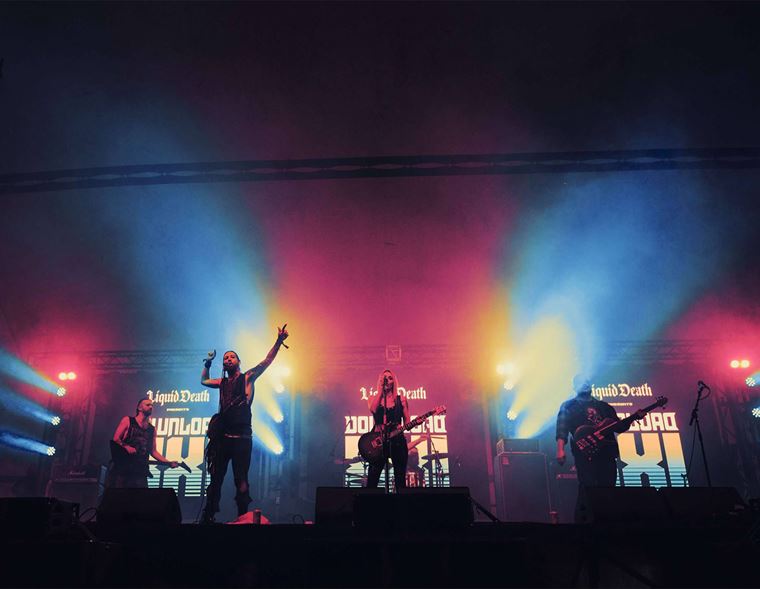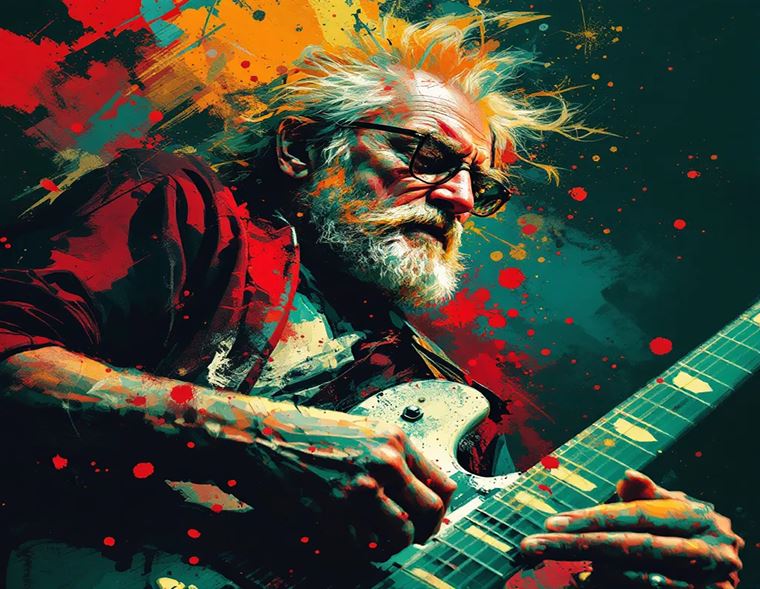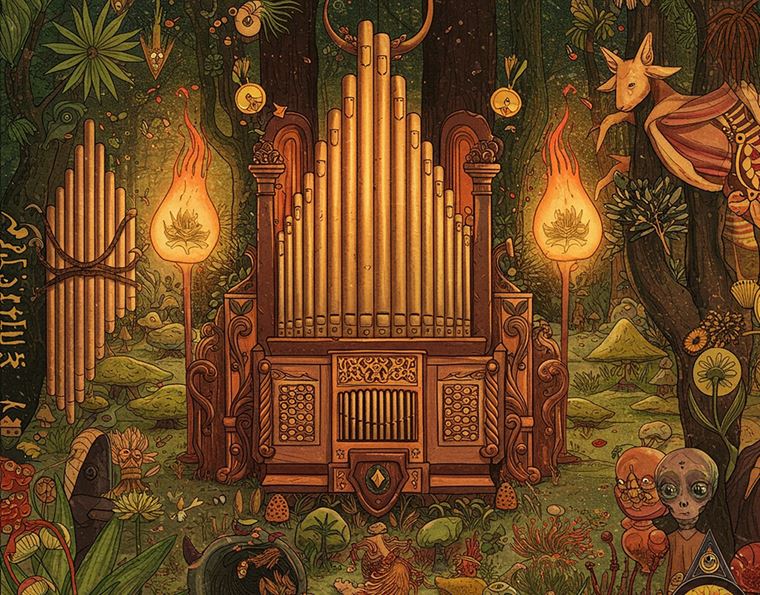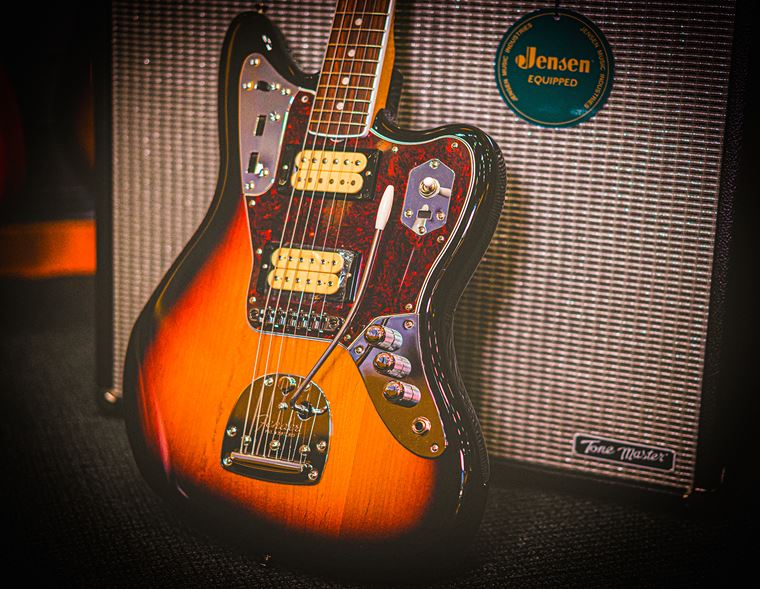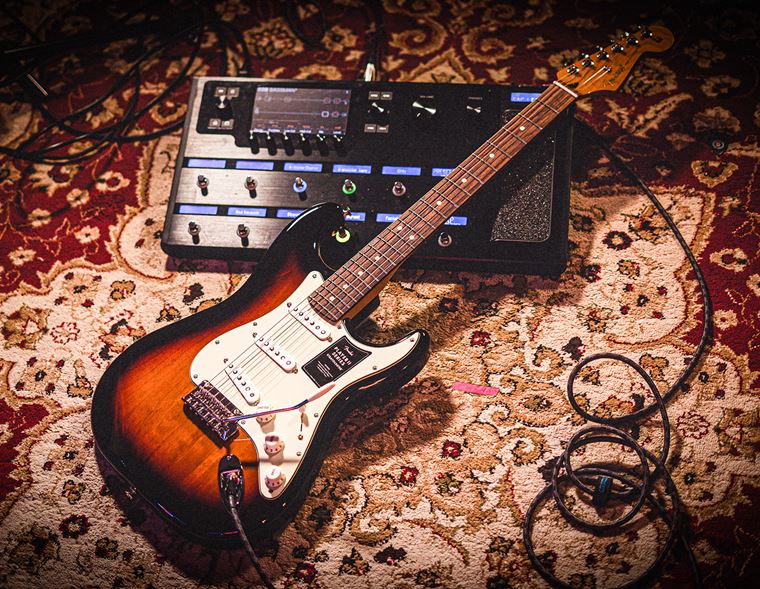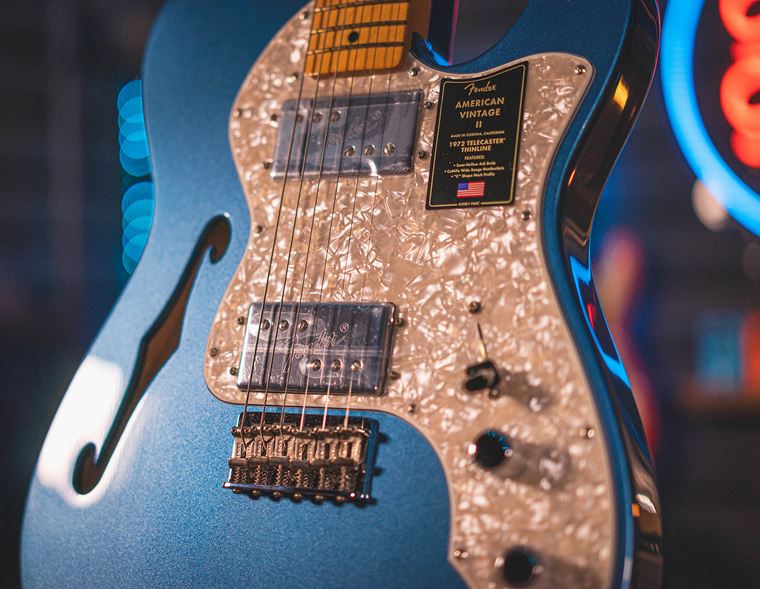The guitarguitar Guide to Home Recording Essentials
Selecting what you need for your first home recording setup can be a daunting task. At guitarguitar we know from first-hand experience how complex this can seem and that the simplest advice can take you a long way. So let us be your guiding light to selecting the best recorder, software and accessories to get your music recorded and produced.
There are two approaches that recording music is based around, direct to a multitrack recorder, or into a software package on your computer.
Let's take a look at what you need to get recording...
Multitrack recorders are loved for their simplicity and portability.
Small enough to take with you everywhere, multitracks are great for noting ideas down on the spot thanks to their built-in microphones. You're not bound to using the inbuilt microphones either.
While these can be great for capturing spur of the moment ideas, you can also plug instruments and microphones directly into the recorder.
These recorders have come on a long way over the years and although they may incur a slight learning curve over their "just hit record' tape cassette counterparts. Once you've learned how simple your digital recorder is to work, you'll soon find the gains of recording digitally. With none of the dreaded tape hiss you get with a cassette recorder, digital effects and cut and paste editing, digital multitracks can have your demos sounding very professional indeed.
Here are some of our favourite multitrack recorders:
The BR-800 by BOSS is one of the most feature packaged recorders available. Boasting 4 individual inputs for recording multiple sources like acoustic duos, drum kits and electronic setups. The BR-800 is also host to a stereo pair of microphones, COSM guitar amp emulation so you can plug your electric guitar straight into the recorder, and 8 overall tracks for layering up your recordings.
To refine your productions the BR-800 has a great range of onboard effects, including reverbs, delays and vocal harmonies, and boast an on-board drum machine for when a drummer isn't available. There's still much more to be found under the hood of this versatile recorder, all of which is built to the standard we've come to expect from BOSS.
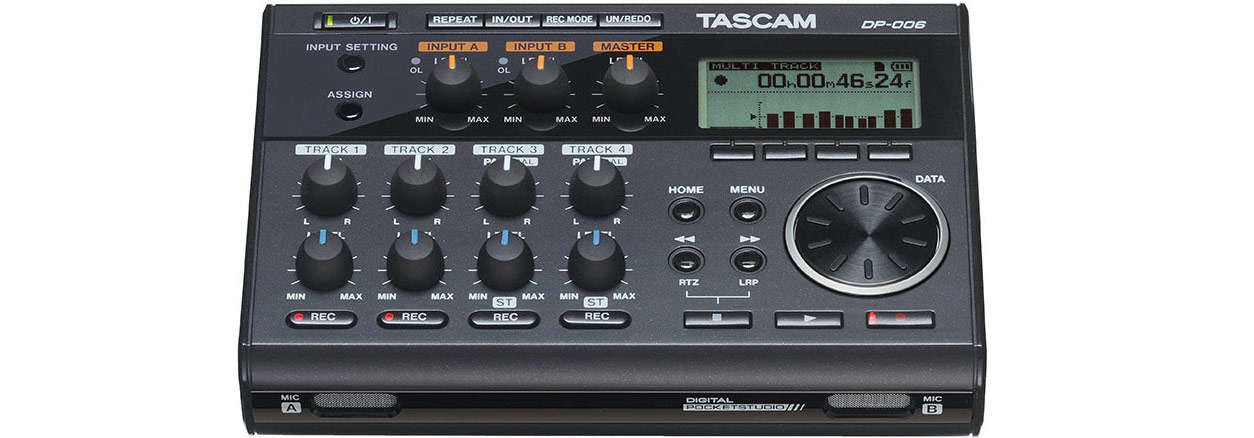
Tascam's DP-006 is one of the most portable multitrack recorders ever. Featuring up to six tracks to layer with 2 recording inputs and a stereo pair of microphones for capturing ideas on the move. As one of the simplest to use recorders the DP-006 focusses on the essentials, with an onboard guitar tuner, basic track editing and a metronome to aid you in getting your ideas down without overcomplicating things with features you won't use.
Recording straight to computer music software is how virtually all popular music has been recorded in the last 20 years. The great thing about modern music software is that it's lean enough to run on most computers and while it can seem complex, the benefits far outweigh the time it will take to learn. In fact, the great thing about living in the 21st century is if you're ever stuck with how something works, in most cases you will find your answer on youtube.
Although your computer will most likely have its own soundcard, to record and produce you will need what's called an "audio-interface". Audio-interfaces are generally USB devices, although they are also available in other formats like Thunderbolt and USB-C. An audio interface generally gives you audio inputs for instruments and microphones (including phantom power for condenser mics) and outputs to headphones and speakers. Your audio interface may also have some other connections like MIDI for use with electronic instruments and ADAT or SPDIF for connecting to other hardware, but you can ignore those for now.
Virtually all audio interfaces come supplied with what's called a Digital Audio Workstation, DAW for short. This is the recording studio software which will run on your computer, this will allow you to record and edit audio, program music and mix your track. Your DAW will also host 'virtual instruments', these can be synths, drum machines, acoustic drum kits or samplers and can be capable of producing virtually any sound you can imagine. Most DAWs will also come with a selection of audio loops, these can be great for sketching out song ideas and getting your production moving quickly.
In most cases the DAW included with your audio interface will be Ableton Live Lite, this is a stripped back version of one of the most popular studio packages. It's a versatile piece of software which can be used for making any style of music and many DJ's even use it when performing to utilise its clever audio syncing technology. Live Lite is so feature packed that you shouldn't feel any limitations of the software, however, upgrades to the full version of the software are available. You're also not tied down to only using software that comes with your interface, all music software will be compatible with it.
Here are some of our favourite USB audio interfaces:
The
Audient iD4 is an award-winning audio interface, featuring a high-quality microphone preamp and a dedicated instrument DI input. The iD4 is built to a standard more commonly seen on higher end interfaces and there are currently no other affordable interfaces that feature technology like the id4's scroll wheel technology, which allows you to map DAW parameters for control via the large knob on the interfaces front panel. The iD4 is supplied with downloads for the Cubase LE DAW software, and several studio quality plugins, a great software selection to get you producing music!
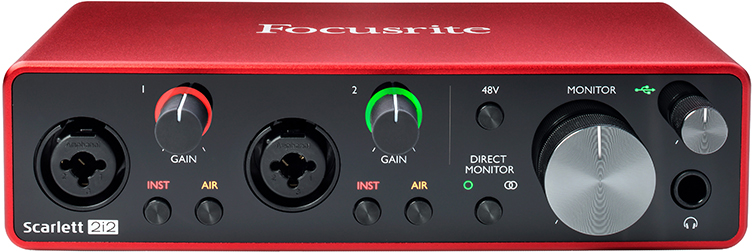
The Focusrite Scarlett 2i2 (3rd Gen) is one of the most popular audio-interfaces ever, recognisable for it's fetching red casing. Keeping it simple with 2 combination inputs, which are suitable for use with microphones, keyboards, guitars and other instruments and will even provide phantom power to condenser microphones.
This Focusrite interface is supplied with downloads for a huge amount of software, including the Pro Tools First and Ableton Live Lite DAWS along with Focusrite Red 2 & Red 3 Plug-In Suite, a choice of 1 of 4 XLN Audio Addictive Keys virtual instruments, Softube Time & Tone Bundle AND Access to the Focusrite Plug-in Collective. That's absolutely tons to keep you going and when added to the crystal clear sound of the Scarlett, you'll get lost in a new world of recording possibilities!
Recording Packages
There are some audio interface studio packages available, like the Focusrite Scarlett Studios and Audio Technica AT2035-Studio Recording Bundle, which come supplied with cables, headphones and a condenser microphone.
These can be a great way to get started with recording, although we've found that condenser microphones can be problematic when recording in your average non-acoustically treated home.
To make recording at home easier we recommend using what's called a "dynamic" microphone.
Dynamic microphones are generally thought of as being stage microphones because they have a narrower pickup pattern and a more focused frequency response, which in turn makes them less prone to feedback.
However, this can be used to your advantage when recording at home, as your mic won't pick up any unwanted room noise or reverberations. Dynamic mics have actually
been used on the lead vocal on many famous albums.
When used correctly, dynamic mics sound just as good as condenser microphones and they're far more user-friendly than the latter.
Dynamic microphones can be used with or without a mic stand, so if you'd prefer to hold the mic when you sing, it's not going to affect the recording quality. Another bonus of owning a dynamic mic is that you can use it when performing live, this is great a great idea for many reasons. Not just because you'll know how to get the sound you want out of that microphone, but it's also far more hygienic than using the same microphone as every other singer on the bill.
Here are some of our favourite dynamic microphones:
The Shure SM58 is the most popular microphone in the world. A staple on stage since they were released to the world in 1969, every singer has used a '58 at some point. While it is mainly used as a live microphone, the SM58 has been used on the lead vocal on many popular albums. Including records by U2, The Sex Pistols and The Killers.
The SM58 is popular for live use because of its cardioid pickup pattern, which is only wide enough to pick up sound directly in front of it. Which can be used to your advantage when recording at home, where bad room acoustics can be an issue.
The SM58 like many dynamic microphones isn't just great for vocals, it is also frequently used on guitars, guitar amps and other acoustic instruments.

Sontronics' Solo is an award winning microphone that's both designed and made in the UK.
The Solo is renowned for it's full and warm characteristic and has a similar tight polar pattern to the SM58, making it great for home recording. Sontronics design all of their microphones with the concept of sounding great as they are and not requiring EQ or filtering to flatter the sound.
All Sontronics microphones come with a lifetime warranty, so the Solo really is an investment that's going to last.
The final essential piece of a home recording setup is a set of "closed back" headphones. These are headphones that have foam surround that fits around the outside of your ear, but also give them excellent sound isolation. Sound isolation is great when you're recording around loud acoustic instruments, as the sound outside the headphones cant pass through the foam, allowing you to clearly hear the headphones audio without having the volume turned up. However, the big benefit is clear when you're recording vocals, it's easy for the audio from the headphones to be picked up by the microphone, which can make mixing problematic. With closed-back headphones, the audio is trapped inside the headphones leaving you with a recording of only your vocal.
Here are some of our favourite studio headphones.
Audio Technica's ATH-M20x headphones are packed full of value for money. Featuring clear sound, excellent sound isolation. They also boast a very robust construction, so not only are they great for starting out, they're destined to last you a long time.
Known around the world as one of the finest set of studio cans within the price range, the
Shure SRH840s offer astounding clarity for their modest price. These headphones are perfect for the studio and are built to last with sturdy materials. They offer a really flat response which is ideal for working on music and
feature a wide frequency response, transparent audio and maximum sound isolation. A favourite of producers around the world, Shure have ensured these are comfortable as possible with a padded headband and a fantastic feel all over that will stand up to as many hours as you can! The rich low end, clean sound and reliability of these make them a stand out for us and musicians all over.
This is only the beginning....
Above are the essentials for any basic home recording set up, as you get more experienced you may wish to look into DAW controllers, studio monitors and MIDI keyboards.
If you're confused by anything mentioned in this article, please don't hesitate to get in touch with our music studio experts.

